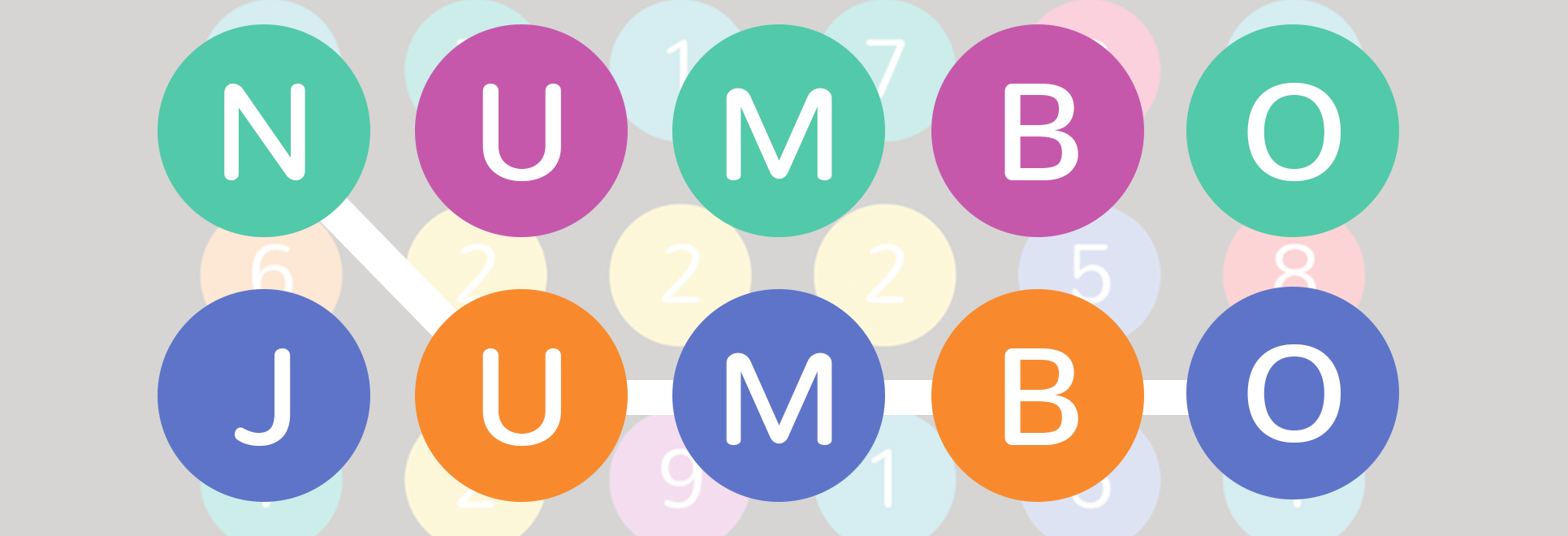
Featured Blog | This community-written post highlights the best of what the game industry has to offer. Read more like it on the Game Developer Blogs or learn how to Submit Your Own Blog Post
Your Brain on Numbo Jumbo
Our experiences crafting an educational game that creates a fun learning experience, instead of replicating outdated teaching strategies with game-ish bells and whistles.

Many educational game designers have critiqued the outdated approach of replicating real-world learning strategies with game-ish features. This is a common mistake in the educational technology industry, and also a very common mistake I see in most educational apps on the App Store and Google Play. Flashcard activities disguised with pretty graphics, timers, etc. Some do a better job than others, but none of them can truly succeed in providing an engaging/effective learning experience because of an inherent contradiction.
“Chocolate covered broccoli” is the term designers and technologists have for this kind of game. The metaphor highlights the inherent contradiction in video games which strive to teach you with gameplay that seems unnatural to the tech learning space. These games aren’t taking advantage of the plethora of mechanics and systems which game designers commonly use to teach their players complex systems of rules and behaviors. These games’ designers fail to see that these complex educational topics have high potential for amazing educational games that are fun games in their own right. They also fail to understand that fun is learning, and that failing to make a fun game is failing to make learning.

"Chocolate Covered Broccoli"
My team and I developed our number puzzle game Numbo Jumbo during the first six months of 2016. We released in June on iOS and Android. We tried to incorporate the aforementioned knowledge in developing an effective gameplay system. I think we succeeded and took some important lessons away from our experiences.
Education-Integrated Gameplay

To play Numbo Jumbo is to perform math.
At the core of Numbo Jumbo’s gameplay is the mechanic of selecting numbers on the grid. The player selects numbers which add up together in order to clear them. Instead of prompting the player a specific math problem to solve, which many educational games do in some flavor, we give the player a complex problem which seeks to engage the player on a number of different levels.
Players aren’t just finding combos in our match-3-esque game. There are many choices in regards to which combos the player is picking. Experienced players will pick combos with the intention of making the board balanced with high and low numbers. If there aren’t enough low numbers left, it is harder to clear the higher ones, so different chains have different values to players which the player will have to make reactive decisions about. This is one example of the complexity of Numbo Jumbo beyond just "doing the math".
Another intricacy of gameplay is strategic choice between selecting small chains of numbers quickly, or taking more time to form a longer chain. We added weight to this decision by destroying bonus numbers for longer chains. This means looking for a long chain might be worth it in order to clear the board. This sort of high-agency move is a common trope of puzzle games (the blue line in Tetris), and a truly effective element of puzzle game design due to the risk/reward dichotomy it sets up in the gameplay.
How can you build your own educational gameplay system? You just have to play around with it. Numbo Jumbo started as a card game prototype, and the digital prototype originally had very complicated gameplay. Just try to make some kind of game out of the topic, keeping in mind you want the gameplay to make sense with the content, and for it to be fun. You’ll learn a lot from playtests.
Understand the Learning
We had many playtests throughout the development of Numbo Jumbo, and in each one, we paid special attention to understanding how the player was learning the game. Our understanding of how are players learned our game informed key design choices which would have otherwise seemed counter-logical. The first long-term behavior I noticed was that players would eventually start selecting numbers based on pure pattern-recognition. In other words, players would eventually train themselves to see certain chains right away, addition sequences that they had mastered/memorized. With this in mind, we chose to make the selection of numbers in Numbo Jumbo to be orderless, meaning the player could select 1-2-3 because 1+2=3, but also 1-3-2, because the rule is the numbers have to sum to the largest number selected. We made this decision because it allowed players who recognized chains to quickly select them without spending time navigating the path, or strategizing about the orientation. This decision greatly improved the flow of the second-to-second gameplay and focused the pattern-recognition behavior we were noticing.
Pattern-recognition is the most powerful tool the player has in Numbo Jumbo. A more experienced player is able to use pattern recognition in a whole other way, to recognize variations of chains the player already knows as valid chains. For example, a player who is able to quickly see 2+3+4=9 may also be able to quickly spot 2+3+3=8, to make the connection in their head. This integration of different patterns is extremely effective at training the player to remember them. This activity really improves the speed of play, and shows a degree of mastery of the number sense required to play Numbo Jumbo.

After exploring the player’s use of pattern recognition, we wanted to know what the player was doing when they weren’t using this skill? Through interview and discussion, we learned there were two other processes players were using to play our game. The first is by madly scanning the board and making a bunch of quick calculations in the desperate search for a possible combo. This mode of play is usually not very successful, and is common for beginners and during times of panic that occur late in the game. We found this kind of behavior a positive addition to our gameplay system because it worked the player’s core number sense, but more importantly because it strengthened their base ability to recognize valid combos.
The other behavior we witnessed was the strategy of players attempting to form chains on-the-fly. You see part of a chain you think you can make based on past experience, so you select it immediately and piece it together as you go. Players will waste less time looking for a combo, but risk not being able to complete it. We were excited by the high risk and high reward this strategy offered, and loved that it got players to play by their gut. There is no better feeling than selecting a monster chain to clear the board with moments to spare!
Because we had a fundamental understanding of how are players were learning our game, we were able to make tweaks which added more depth and fun in our educational game. While not everything we learned led to any changes, everything did greatly inform our playtest discussion sessions, as we were able to ask important questions that revealed insightful answers about the inner workings of the player’s head and the gameplay experience.
Don’t Shy Away from the Content
In dealing specifically with math, we had to keep in mind the “math anxiety” which players will react to our game with. Many people told us not to make a math game with time pressure. However, we wanted to embrace the fun and challenge of numbers, and we thought the timer added a lot of substance to a couple of our modes. We included 2 turn-based modes (Moves, Stacked), and a minute long challenge mode. Our most fun mode, though, is Infinite Mode, a tetris-inspired game where numbers fall from above and the player must prevent the board from filling up. The intensity will be too much for most casual players, but we have found this to be our most retentive and competitive mode.
In playtesting Infinite Mode, we realized there was something wrong with the progression of the game. Players, after playing for a minute or two, would grow bored due to a lack of short-term challenges. We divided up the game into levels, but this didn’t seem to solve the problem, and made our game less elegant. We decided to experiment with increasing the challenge of the game over time, by adding higher numbers as the game went on. This proved very successful at engaging players, who were drawn to the ever-increasing complexity of the board. This change made our gameplay deeper and more compelling. The difficulty ramping also fit well with the pattern recognition behavior we observed, as new pattern possibilities were introduced as the player mastered more of the content. We also loved that a kindergartener and a math PHD student could both play the same math game with a challenge progression and perceived depth open to them, and we didn’t even have to do any extra work to allow that!

Educational game designers need to approach the development of their game like any other video game. If you make the content the core of the game, and experiment with it for a while, you can craft a compelling gameplay system which creates an engaging learning loop. If you can understand exactly how your player is learning, you can make changes that add more educational depth, which in turn can unlock more fun.
I’m very excited to see a new wave of educational games that we can use in the classroom, but are also fun enough to play on the bus. Please check out Numbo Jumbo on iOS or Android, or check out our website. Comment with any feedback about this blog post or the game. I’m always looking for more solid educational games, so let me know if you know any!
Read more about:
Featured BlogsAbout the Author
You May Also Like









